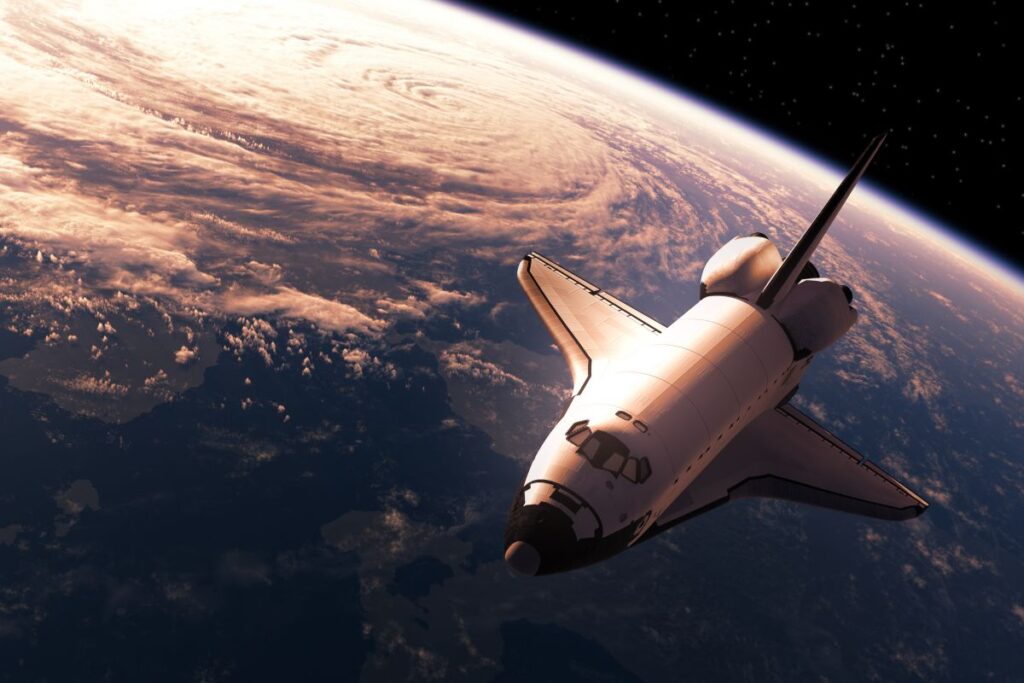Well, here’s something you don’t see every day. Amazon needed to launch satellites into orbit quickly, and it enlisted SpaceX for the job. Yes, that SpaceX, the one led by Elon Musk, who is taking on Amazon directly in the satellite internet business. When deadlines are breathing down your neck, sometimes you’ve got to put rivalry out the door.
And finally, the SpaceX Amazon Kuiper mission launch attempt happened on October 13th, after Mother Nature threw a week’s worth of problems at it. Rain poured down across Florida. Then Tropical Storm Jerry churned up foul seas in the Atlantic. The rocket teams could only sit and wait. But the weather cleared and at 9:58 p.m., Falcon 9 took off from Cape Canaveral, carrying 24 more Amazon satellites to join Project Kuiper.
Why This Whole Thing Started
Amazon’s got a problem. They signed contracts with three rocket companies — United Launch Alliance, Blue Origin and Arianespace- and it was a smart decision at that time. But when Amazon needed those rockets, they were not ready.
Vulcan, from ULA, is still in the testing phase. New Glenn, Blue Origin’s vehicle, had barely begun to fly. The Arianespace rocket known as the Ariane 6 lifted off just twice. And the FCC has told Amazon that unless it has half its satellites up and running by July 2026, it will forfeit permission to launch the rest.
So, in December 2023, they put their pride aside and gave SpaceX a call. They booked three Falcon 9 flights. Must’ve been an awkward conversation. But SpaceX launches rockets constantly. They’ve done 115 last count, just for 2025! They’re essentially operating an orbital delivery service at this point.
What Went Down on October 13th
The launch could not happen on October 3rd because the weather was bad. Rain was followed by rough seas, making it too risky for the drone ship that catches rocket boosters. You can’t launch if everything isn’t perfect.
As it turned out, when they finally did, everything worked great. The rookie rocket had already flown once — last August, for another Kuiper launch. That’s why SpaceX is cheaper. They don’t throw stuff away; they reuse it.
Some 24 satellites separated and deployed some 60 minutes after the lift-off. The booster touched down on a drone ship in the Atlantic. Amazon now has 153 satellites circling the Earth. Oh, that sounds like a lot, but they need 3,236. They’re way behind.
How Behind Are They Really?
SpaceX’s Starlink has more than 8,500 satellites already in orbit. Millions of people use it. Amazon just started.
When will Project Kuiper be available for normal folks? Amazon says early 2026, but that’s for businesses first. Regular customers can expect it no sooner than the end of 2026 or even 2027. For basic service, they require at least 578 satellites in operation. They’ve got 153 now.
Do the math on that timeline. They need to launch roughly twice a month for the next 20 months to hit their FCC deadline. That’s tough even when everything goes right. And in space, things rarely go right.
What Happens Next
Amazon booked over 80 launches in total. After SpaceX’s three missions (which are done now), other companies take over. ULA’s doing 46 launches. Blue Origin might do 27. Arianespace has 18 lined up.
The Kuiper launch schedule is packed. By mid-2026, Amazon needs 1,618 satellites operational. They’re averaging 27 satellites per launch. You can see why they’re stressed.
Why You Should Care
Better satellite internet means more options for people in rural areas. Right now you’ve got Hughesnet, Viasat, and Starlink. That’s basically it. Adding Amazon means more competition. Competition usually means better prices and service.
Project Kuiper promises speeds up to 400 megabits per second. Their faster option hits 1 gigabit per second. The dish costs under $400. That’s similar to what Starlink charges.
Their satellites can talk to each other using lasers instead of going through ground stations. That’s actually pretty cool tech. They also have a special coating so they don’t mess with telescopes on the ground as much.
Starlink’s Not Waiting Around
While Amazon builds their network, SpaceX keeps launching more Starlink satellites. They’re improving service constantly. China’s building two massive constellations too—Guowang and Qianfan. Each one plans about 13,000 satellites.
It’s a race to cover the planet from space. And competition’s good for everyone. It forces companies to work harder and charge less.
The Bottom Line
The SpaceX Amazon Kuiper mission launch attempt shows how much space has changed. Companies can just book rocket launches now like you’d book a flight. Wild.
Amazon’s still got tons of work ahead. They need about 1,465 more satellites by mid-2026. That’s aggressive. But Amazon’s got the money to throw at this. They’re betting billions that satellite internet is the future.
The Amazon Kuiper next launch probably happens in November or December with ULA taking over. They’ve got several Atlas V missions coming up.
Whether you’re following space news or just want better internet, the next two years will be interesting. Amazon had to work with their competitor to stay in the game. Sometimes you gotta do what you gotta do.
Now we wait and see if they can actually meet those 2026 deadlines. Knowing how space projects usually work, there’ll probably be more delays. But at least Amazon’s finally got satellites up there. That’s something.

